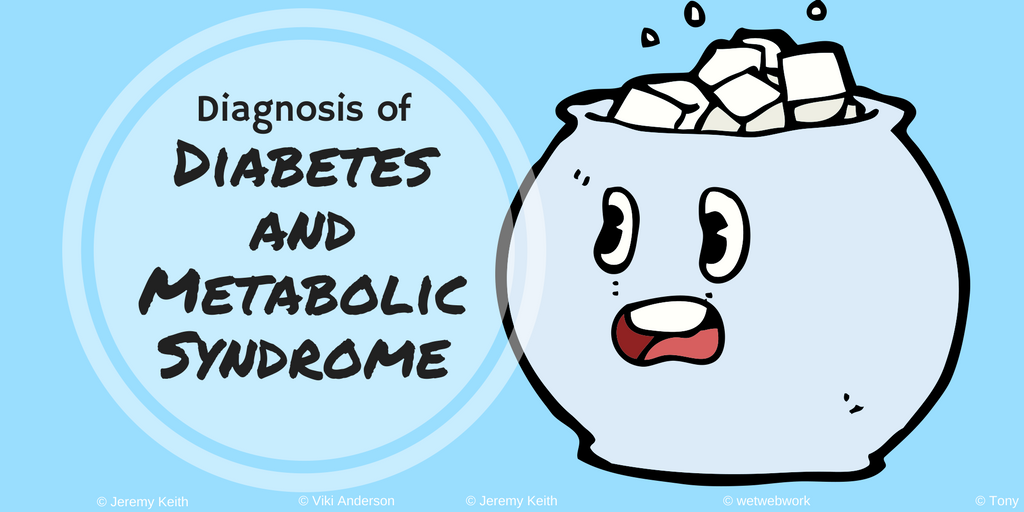
Before getting to the testing stage we can get some very useful clues from a combination of the clinical picture together with commonly done routine tests. However, if you eat what is generally considered a ‘normal, healthy, balanced diet’ (ho! ho!) based on the intellectually risible food pyramid, then it is likely that you have carbohydrate addiction and are on the way to metabolic syndrome and diabetes.
In order of priority and ease, the diagnosis can be made from:
- The contents of the supermarket trolley
- Diet
- Snacking
- Tendency to go for other addictions
- Obesity
- The clinical picture
The contents of the supermarket trolley
- Bread, biscuits, cake, pasta, cereals, sugar, waffles, bagels, dough nuts and other such
- Fruit juice, pop, alcohol, “energy” drinks and general junk drinks
- Fruit basket with tropical sweet fruits such as pineapple, melon, bananas, grapes. Apples and pears
- Sweet dried fruits – sultanas, raisins, dates
- Snack foods – cereal bars, ‘energy bars’
- Sweets, toffees, fudges
- Honey, fructose, syrups
- Jams, marmalades, choc spreads
- Artificial sweeteners
- Ice creams and puddings, like cheesecakes and trifles
- Low cocoa-percentage chocolate
- Crisps, corn snacks, popcorn…you get the idea – we call it junk food!
Such a supermarket trolley is very indicative of a diagnosis of carbohydrate addiction, metabolic syndrome and/or diabetes.
“Indeed, I have just returned from a trip to the supermarket. The man in front was placing his purchases at the check-out. I felt myself sighing as the packets of chocolate biscuits, crisps, white bread and sweet drinks piled up. But what moved me to an intense desire to shout out were the final three items – paracetamol, ibuprofen and a box of antacids. He was poisoning himself with the carbs, then symptom-suppressing with the drugs. Addiction has blinded him to the obvious.”
Diet
Breakfast gives the game away. This is because no food has been consumed overnight and with carbohydrate addiction, blood sugar levels are low in the morning. The need for a carbohydrate-based breakfast indicates metabolic syndrome – typically with consumption of fruit, fruit juice, sweetened tea or coffee, cereals, toast, bread or croissants. ‘Oh, but surely porridge and muesli are OK?’ so many cry. Often they are not OK – the only way to really find out is to measure blood sugar levels.
“Even now my daughters can hear me groaning when the adverts on the telly for breakfast cereals come on. I really cannot stop myself. The Telegraph recently reported that, ‘Children’s breakfast cereals can contain as much as three teaspoons of sugar – the equivalent of two and a half chocolate biscuits,’ and so there are also ‘hidden’ dangers.”
Snacking
The need for a carbohydrate snack or sweet drink is often triggered by falling blood sugar. Many people comment that when they go on holiday and treat themselves to a fry-up for breakfast, they no longer feel hungry before lunch. Snacking is a disaster – it feeds the fermenting mouth and gut, prevents the glycogen sponges squeezing dry, spikes insulin and prevents fat burning.
Carbohydrates with every meal
The symptom of ‘not being satisfied’ with meat and vegetables is particularly indicative of carbohydrate addiction, with the need for a sweet pudding to ‘hit the spot’.
Tendency to go for other addictions
Also highly indicative of carbohydrate addiction is the tendency to have other addictions … such as alcohol, smoking, coffee, chocolate, prescription drugs (yes – many of these are addictive), and ‘legal’ and illegal highs.
Obesity
Obesity is not the cause of metabolic syndrome and diabetes, but may be a symptom of both. Many people with type 2 diabetes have metabolic syndrome and normal weight and vice versa – obese people may have no signs of metabolic syndrome. It is the constant sugar spikes in the portal vein, the effect of which eventually spills over into the systemic (whole body) circulation, when the liver is overwhelmed, this characterises metabolic syndrome and diabetes. We cannot measure these spikes because the portal vein is buried deep in the abdomen and links the gut to the liver. Interestingly, it is the fatty liver which is highly correlated with metabolic syndrome and diabetes – not the fatty rest of the body. Fat in the liver can be measured with MRI scans, but this is an expensive test not routinely available.
The ability to gain and lose weight is an essential survival ploy for all mammals. Think of the hibernating female brown bear who has to survive months of intense cold, pregnancy and breast feeding with no food intake. She achieves this on autumn fat together with the ability to switch into fat burning. She remains completely healthy throughout.
Share your story for Diabetes Week by using the hashtag #knowdiabetes.
This blog was originally published in Prevent and Cure Diabetes: Delicious diets, not dangerous drugs by Dr Sarah Myhill and Craig Robinson.
